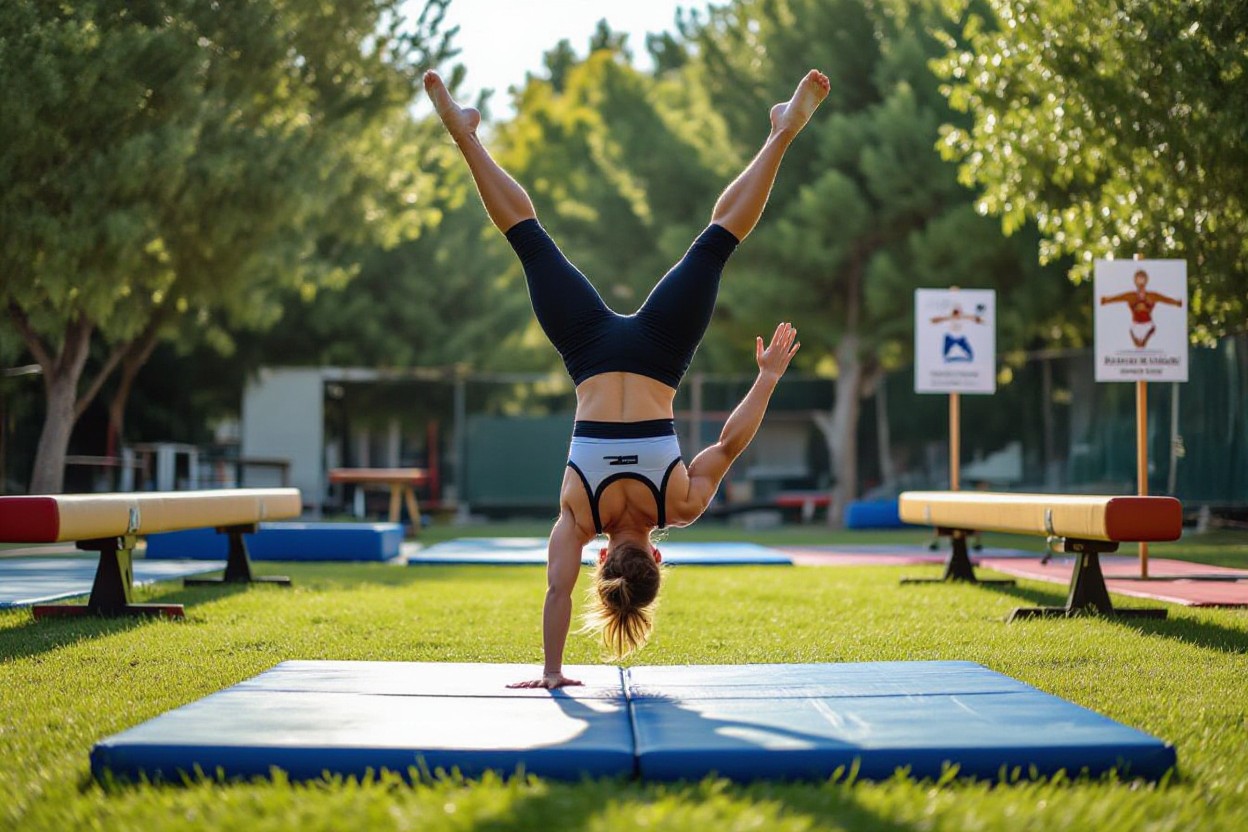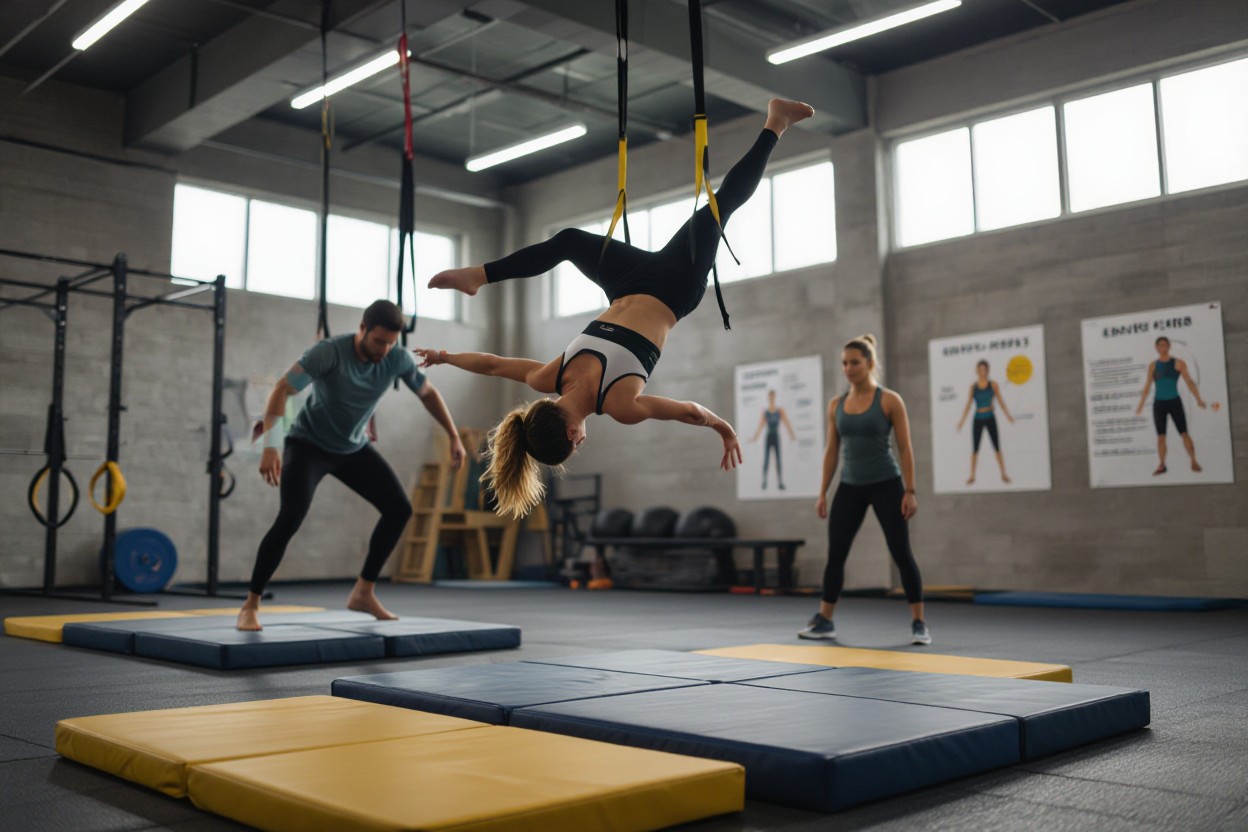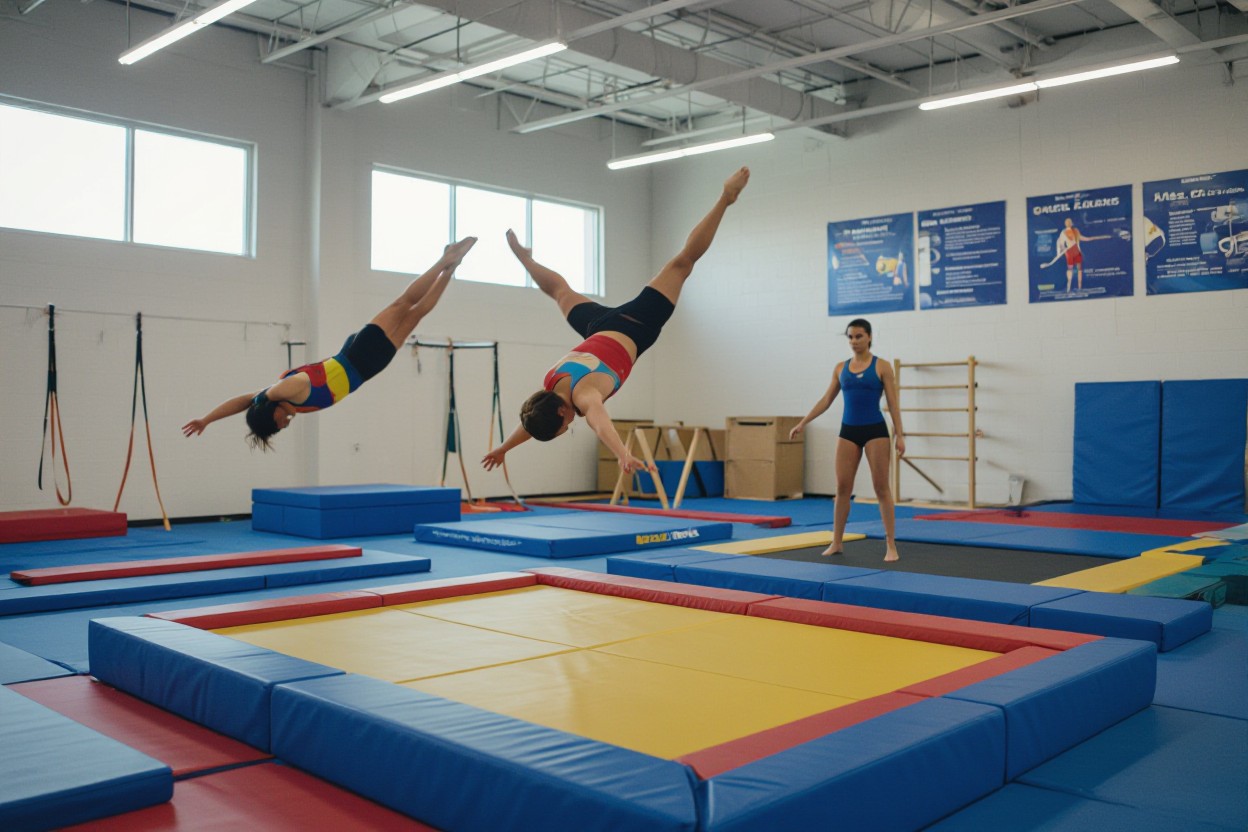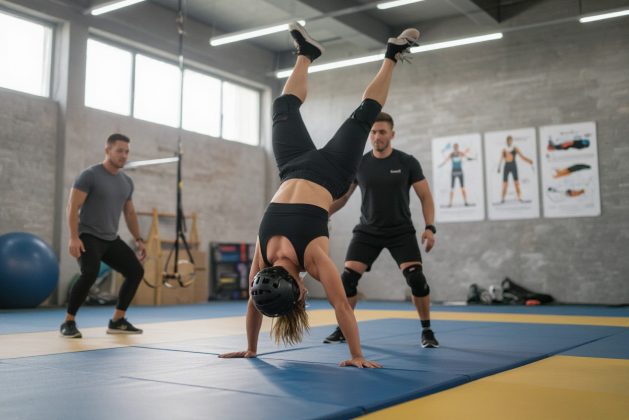There’s an undeniable thrill in mastering a backflip, but it’s important to approach it with careful preparation and safety. I’ve learned that by breaking down this complex movement into manageable steps, you can build the strength, flexibility, and confidence needed to perform it successfully. In this guide, I’ll walk you through each stage, emphasizing proper technique and precautions to minimize the risk of injury. With patience and dedication, you’ll soon enjoy the satisfaction of executing a backflip safely and skillfully.
Setting the Stage: Essential Gear and Safety Precautions
Backflipping demands respect for your body’s limits and the environment. Protective gear minimizes injury risk—I’ve seen beginners skip helmets or wrist guards only to regret it later. Padding around ankles and knees cushions landings, reducing strain. Good traction footwear prevents slips during takeoff. Your gear should feel snug yet flexible to allow full motion. Alongside equipment, mental preparation involves acknowledging the flip’s complexity, fostering focus without fear. In my experience, pairing proper gear with a clear mindset builds confidence, which is half the battle won in nailing safe, fluid backflips.
Must-Have Equipment for Backflipping
Essential gear includes a well-fitting helmet to protect your head, especially during initial attempts where falls are common. Wrist guards and knee pads shield vulnerable joints during unsteady landings or slips. I recommend choosing shoes with grippy soles to ensure your feet don’t slide at takeoff, adding stability. A thick gymnastics mat or foam pit softens impact, allowing trick refinement without harsh consequences. These items collectively reduce injury risk and build your confidence, enabling you to focus entirely on mastering technique rather than fearing injury.
Creating a Safe Training Environment
I suggest training on even, debris-free surfaces surrounded by ample open space—ideally a gymnastics gym or a backyard with mats. Good lighting removes shadows that can distort depth perception, while a spotter offers invaluable real-time feedback and emergency assistance. Avoid hard floors like concrete in early stages; instead, opt for spring floors or layered gym mats to absorb shock effectively. Setting clear boundaries around the training area helps prevent distractions or accidental collisions with others, ensuring your focus remains sharp throughout practice.
Diving deeper into creating a safe training environment, I emphasize the value of controlled conditions. For instance, practicing near stacked foam blocks or into a foam pit allows you to attempt flips without hesitation, knowing that mistakes won’t result in sharp impacts. In a professional gymnastics setup, spring-loaded floors provide bounce that softens landings and lessens joint stress, shortening recovery time. Surrounding your space with spotters or coaches not only safeguards physical well-being but adds psychological assurance, allowing you to push limits under watchful guidance. These layers of safety form the foundation for sustainable progress and injury prevention during your backflip journey.

Building the Foundation: Key Strength and Flexibility Exercises
Backflips rely heavily on a solid base of both strength and flexibility. Developing muscle groups like the core, legs, and back while enhancing joint mobility ensures your movements are controlled and fluid. By targeting these areas consistently through tailored exercises, you reduce the risk of injury and create a stable platform for safe aerial maneuvers. I recommend combining resistance training with dynamic stretches to build this foundation progressively, making your body resilient to the forces involved during a backflip.
Core Strength: The Secret to Stability
Your core acts as the command center during a backflip, coordinating balance and power transfer. Exercises like planks, Russian twists, and hanging leg raises engage all core muscles, enhancing your control midair. I found incorporating variations that challenge rotational strength also improves spinal alignment and control, vitals when tucking and rotating. A strong core not only aids stability but also protects your lower back from strain during landings, making it an indispensable focus in your training.
Flexibility Routines: Preparing Your Body for Movement
Improving flexibility, especially in the hamstrings, hip flexors, and shoulders, expands your range of motion and minimizes muscle tightness. I include a mix of static stretches, like seated forward bends, and dynamic movements such as leg swings to prepare muscles for rapid engagement. These routines enhance the fluidity of your backflip, preventing stiffness that can interrupt your rotation and possibly cause falls. Regular flexibility training fosters smoother execution and better overall body mechanics.
Delving deeper into flexibility routines, targeting the hip flexors and quadriceps is particularly beneficial since these muscles facilitate the explosive push-off during takeoff. Incorporating PNF (Proprioceptive Neuromuscular Facilitation) stretching techniques every other day has significantly improved my muscle elasticity, allowing for more aggressive tucks and safer rotations. Moreover, shoulder mobility drills involving controlled arm circles and band stretches pave the way for better upper body positioning, reducing the chance of awkward landings. Balance between static and dynamic stretching ensures muscles remain both supple and responsive when performing backflips.

The Mechanics of a Backflip: Step-by-Step Breakdown
| Step | Action |
| 1. Preparation | Stand straight with feet shoulder-width apart, focus your gaze forward. |
| 2. Takeoff | Bend your knees and swing your arms upward to generate explosive vertical momentum. |
| 3. Tuck | Pull your knees to your chest while wrapping your arms around your shins to increase rotation speed. |
| 4. Rotation | Maintain a tight tuck and focus on spotting your landing by opening your eyes mid-flip. |
| 5. Landing | Extend legs downward, absorb impact with bent knees, and keep your core engaged for balance. |
Understanding Your Takeoff and Momentum
You’ll want to emphasize a strong, explosive takeoff to maximize upward lift and rotational power. When you bend your knees deeply and swing your arms aggressively upward, you’re creating significant vertical thrust. The momentum generated here sets the entire flip in motion, so harnessing this energy with precision is key. Avoid leaning too far back or forward, since that will disrupt your rotation or throw off your landing alignment.
Mastering the Tuck Position
Pulling your knees tight to your chest and wrapping your arms firmly around your shins will dramatically increase your rotational speed. Staying in a compact tuck helps you spin faster and more controlled, reducing the risk of under-rotating. I recommend practicing this position separately by hanging from a bar and simulating the tight tuck to build muscle memory.
In addition to tightening your tuck, focus on maintaining core engagement throughout the flip. Your abdominal muscles act as the pivot point, and contracting them aids both rotation and balance mid-air. Experiment with different tuck intensities to find what allows you to rotate swiftly without feeling cramped. Using video analysis to compare your tuck shape can further help refine your form for optimal control during the flip.

Progressing Through Drills: From Basics to Backflips
Transitioning from simple exercises to the full backflip requires a structured approach with incremental challenges. I focus on mastering each step—starting with solid landings and controlled jumps—before moving to more dynamic movements. This progression mitigates risk and builds muscle memory. Every drill enhances coordination, strength, and spatial awareness, all vital for a successful backflip. Skipping stages often leads to injuries or incomplete rotations, so patience and persistence through these drills pay dividends in both skill and confidence.
Fundamental Drills for Beginners
Practicing tuck jumps and backward rolls forms the foundation of your backflip journey. These drills develop explosive power and comfort with backward motion. Using a soft mat, you can practice controlled landings and begin engaging your core muscles. I suggest 3 sets of 10 tuck jumps, focusing on height and knee tuck consistency. Backward rolls build confidence in flipping your body backwards, which eases fear and teaches you to spot your landing. Each beginner drill teaches body awareness, reducing the fear of falling and preparing you physically and mentally for advanced movements.
Intermediate Techniques to Elevate Your Skills
Incorporating drills like back handsprings, wall flips, and assisted rotations dramatically improves your aerial control and rotation speed. Performing back handsprings refines your takeoff timing and arm swing coordination, accelerating your backward rotation. Wall flips, using a padded wall, allow you to practice flipping at a controlled angle, strengthening your back and leg muscles. Assisted rotations with a spotter or harness help develop the muscle memory needed to complete a backflip without hesitation. These intermediate drills fortify your technical precision, ensuring smoother execution and safer landings.
Intermediate techniques demand both strength and timing—executing back handsprings requires explosive leg power and coordinated arm swings to generate momentum, while wall flips build your ability to rotate vertically with control. Assisted rotations, often done with a coach or using a harness, replicate the full backflip motion but minimize risk by providing support throughout the flip. This support lets you focus on body positioning during mid-air rotation and develop neural pathways for the movement. Dedicated practice of these techniques transforms tentative attempts into confident, controlled flips.
Common Pitfalls: Navigating Challenges in Your Training
Backflips demand a blend of technique, confidence, and physical readiness, but the learning curve isn’t without its bumps. I’ve seen trainees struggle with inconsistent takeoffs, premature tuck timing, and insufficient vertical lift, all of which can turn a safe flip into a risky attempt. Identifying and correcting these flaws early on avoids reinforcing bad habits. Pay attention to how your body moves—repetitive drills on trampoline or foam pits can expose weaknesses that landings on solid ground might hide. Tackling these challenges head-on speeds up progress and keeps your training injury-free.
Overcoming Fear and Mental Blocks
Fear often paralyzes progress more than physical limits ever will. Your brain tends to fixate on the potential to fall, triggering hesitation mid-motion. I suggest visualization techniques where you mentally complete the backflip smoothly, creating neural pathways that build confidence. Gradual exposure, like starting with backward rolls and progressing to assisted flips with a spotter, also dismantles mental barriers. The shift comes when your mind stops doubting and your body responds with fluidity and trust.
Injuries to Avoid: Signs and Solutions
Sprains, bruised tailbones, and wrist strains frequently surface from improper landings or insufficient conditioning. Early signs include persistent soreness, swelling, and reduced mobility. I always recommend resting immediately when you spot these symptoms and icing the affected area to reduce inflammation. Addressing injuries swiftly minimizes downtime and prevents chronic damage, which can derail your training timeline.
Delving deeper into injury prevention, shoulder dislocations and neck strains often arise from incomplete rotations and lack of head protection during the flip. Strengthening your core and shoulders with targeted exercises like planks and resistance training adds stability. Incorporating thorough warm-ups increases blood flow and flexibility, reducing muscle tears. If pain persists beyond 48 hours, consulting a sports physiotherapist can provide tailored rehabilitation protocols, ensuring you’re back flips-ready without compromising safety.
To wrap up
The key to mastering a backflip safely lies in consistent, step-by-step training that builds your confidence, strength, and technique gradually. I encourage you to focus on each stage of the process—from warm-up and spotting to practicing flips with supervision—while listening to your body’s limits. By committing to proper form, using appropriate safety measures, and progressing patiently, you will gain the skills needed to perform a backflip confidently and safely. Your dedication and mindful practice are the foundation for a successful and injury-free flip.





Leave a comment